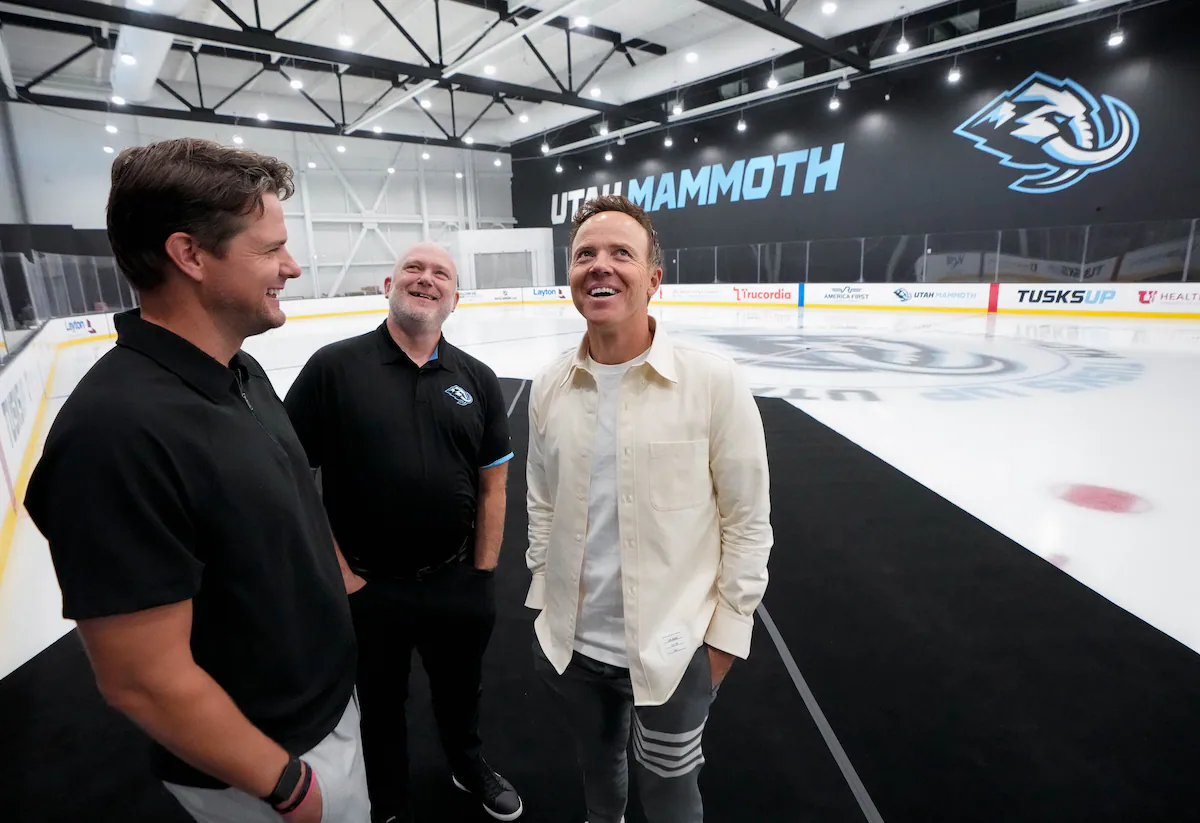
Sandy • As billionaire owner Ryan Smith led one of many tours through the Utah Mammoth’s new practice facility this week, one emotion was constant in his words and on his face:
Pride.
The sprawling 146,000-square-foot facility in The Shops at South Town will host the NHL team as it begins the 2025-26 season. And it’s clear that Smith believes the project — which will also be open to local hockey teams to practice and play at in “early 2026″ — will change the fates of the community at the southern end of the Salt Lake Valley.
needed
“I think that was one of the things Sandy City said, that, like, ‘We really need your help,’” Smith said, adding there was “not a lot of life” in the area.“ “I mean, we took over a mall here — it was arguably dying on some level, which most malls are. Then we put a bunch of life into it with the ultimate anchor tenant, which is sports.”
The Mammoth began their training camp at the new facility on Thursday; the team’s rookie camp already took place there last week. The Utah Jazz have also moved some business operations down to the site on the corner of 10600 South and Interstate 15.
“Not a lot of us do live downtown, and there’s a lot of pressure for our players to be down or close to the arena,” Smith said. “Well, right now, what’s really cool is our players are going, ‘Oh, wait, I’ve got downtown and I’ve got Sandy. I can live anywhere (in between) there.’”
It’s been just 13 months since crews broke ground on the location after the Smith Entertainment Group bought the mall complex. Here’s what The Salt Lake Tribune saw on a tour of the facility this week:
First things first: the hockey rinks. Two full NHL-size rinks take up the most southern space of the South Town complex; Smith boasted about how the team would be able to practice on one rink, “chop it up,” and then have it be Zamboni’d while the team continued practice on rink No. 2.
Both ice sheets contain a “local positioning system” that allows the team to measure players’ speed, workload, and other metrics related to their practice performance.
When the team is on the road, or when practice is out of session, the rinks “will be available for team practices for community programs, youth hockey, and public skating.” The Smith Entertainment Group plans to have 500 spectator seats available for the rinks.
The design of the locker rooms largely mirrors that of the Mammoth’s locker room in the Delta Center. Players have separate storage spaces for sticks and their equipment.
A second overflow locker room will be used for the team’s rookie camp, or other times when the team is working with more players than usual. Beyond that, the facility will have eight other locker rooms for visiting teams.
Where previously players’ skates were sharpened by hand by equipment manager Tony Silva, a new automated sharpener speeds up the process and leads to better results. About half the teams in the NHL now use automated sharpeners rather than hand-sharpening skates.
Each player has up to 12 blades that can be used on their skates, which can be swapped out during games in a matter of seconds should one go dull.
The facility’s medical wing features massage tables, float tanks, compression systems, and more. There’s a dedicated concussion room for diagnosis, treatment, and return-to-play protocols, along with a sauna and steam room large enough for full-team sessions, Smith said.
Finally, the pool room contains a 22-foot therapy pool, with underwater treadmills and current resistance systems for recovering players.
The team’s workout room is massive: 40 yards of turf allows room for quick sprint training, including with resistance belts.
Squat racks are equipped with cameras for biomechanical validation, making sure the athletes do their weight training with the correct form. Rooms with a form of synthetic ice made of plastic allow players to work on shooting and puck handling outside of the rinks when needed.
One goal of Smith’s was to create a practice facility where players would want to stay even when they didn’t have to be there. As a result, the Mammoth created an open-concept kitchen, dining, and living room area at the facility.
A long set of tables sits in the middle; NHL Commissioner Gary Bettman suggested there be enough room so that the whole team could eat together if the players wanted, Smith said.
Players can eat either buffet-style meals or, eventually, order à la carte through the team’s kitchen with a mobile app. There are dedicated smoothie and espresso stations, a cold bar, and even kegerators “for kombucha and cold brew.”
A lounge and barbershop are also planned for the facility.
All in all, the early reviews from players and coaches are positive.
“In our organization, we have people who have been around — you know, it’s not their first barbecue,” head coach Andre Tourigny said. “They’re looking around, like, ‘Wow, that’s unreal. So it’s really unbelievable.”
Defenseman Sean Durzi agreed. “It’s state-of-the-art stuff. It’s everything you could ask for and more. I’m sure it’s going to be a selling point for many players in the league,” he said. “It’s a beautiful facility.”



